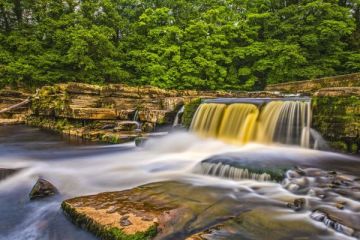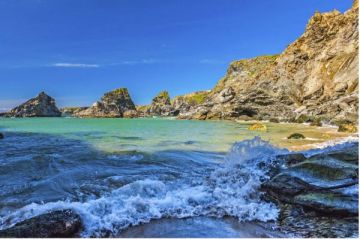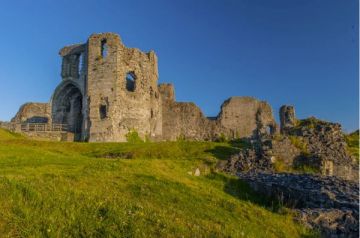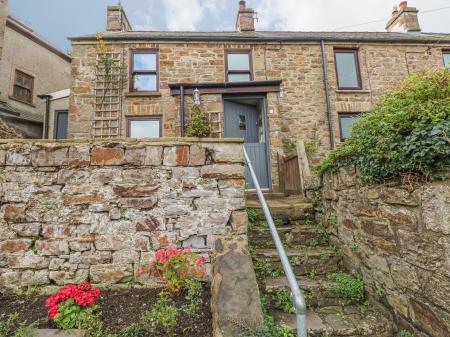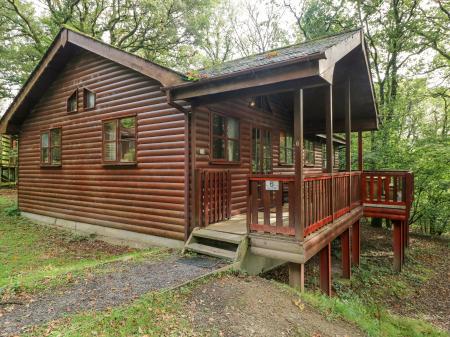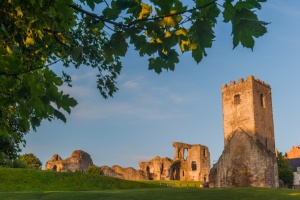
Castles, country houses, coastline and pastoral scenery all add up to make this part of Wales full of attractions. Bronze Age remains and Iron Age hillforts dot the landscape. Some towns date back to the 14th century.
Denbigh is an old market town with steep streets. Henry Stanley of Stanley and Livingston fame - "Dr Livingstone, I presume" - came from here. Interesting buildings in the town include the ruins of two churches: an early 14th-century church, St Hilary's and "Leicester's Folly," (Queen Elizabeth I's favourite man about town). A Carmelite friary, remnants of town walls, and an ancient market add to Denbigh's atmosphere. Henry de Lacy, the English commander erected the town walls.
Denbigh Castle crowns a steep hill overlooking the town and the countryside. It was built as part of Edward I's 13th-century campaigns against the Welsh. Due to a Welsh uprising in 1294, the triple-towered Great Gatehouse was added to the castle.
Rhuddlan Castle was another of Edward I's iron ring of fortresses built in the late 13th century. The first view is of its massive twin-towered gatehouse. Set within are concentric wall-within-wall defences. Although the castle is 3 miles (5km) from the sea, the River Clwyd was dug out in order to give ships access to the castle.
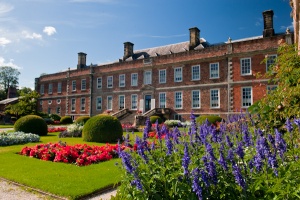
Erddig House, built in the 1680s, was known for the close relationship between the servants and family, and photographs of the servants line the hallway "downstairs". Upstairs are 18th-century furniture, porcelain, and glass. The rooms both up and downstairs are much as they would be in the late 1800s. The estate outbuildings include a blacksmith shop, saw mill, stable yard, carriages, laundry, bakehouse, and kitchen. The 18th century walled garden is considered important historically.
Llangollen, clustered around the River Dee, nestled in the Vale of Llangollen, and surrounded by hills is as scenic as it gets. It is best known today as the home of the Llangollen International Musical Eisteddfod. For one week in July this village comes alive with dancers, singers, choirs and musicians from all over the world and the village of 3000 people swells to 120,000 as cultural competitions and celebrations dominate the scene.
Plas Newydd sits high on a hill overlooking Llangollen. This black and white timbered house was the home of two eccentric Irish ladies, known as the Ladies of Llangollen. Lady Eleanor Butler and Miss Sarah Ponsoby, who always dressed as men, lived in the house for 50 years, entertaining famous literary and political figures, including Sir Walter Scott and William Wordsworth. The beautiful grounds surrounding the home are now a public park.
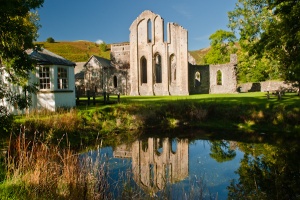
Hill climbers might almost believe the crumbling ruins of the medieval Castell Dinas Bran, perched on another hilltop high above the town, were designed with a challenge in mind. Breathtaking views are the reward for the steep 750-foot climb. The 13th-century castle, named for a Celtic god, is partly surrounded by the remnants of an Iron Age hill-fort and ditch. In the 18th century its status grew when it was considered a "romantic ruin", and it became the most famous landmark in the Vale.
A stone's throw from Llangollen, in a setting both romantic and stunning, the Gothic stone ruins of 13th century Valle Crucis Abbey beckon. This Cistercian abbey, founded by a Welsh prince, boasts an almost intact chapter house. One of the enterprising abbots was accused of minting his own money.
Bodelwyddan Castle may look medieval but it's a 19th-century mock castle complete with turrets and battlements, built on and around an earlier original house. The architect responsible for the castle, Joseph Hansom, invented the Hansom cab that bears his name. The National Portrait Gallery has a collection of 19th-century paintings displayed here.
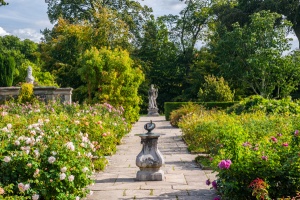
Bodnant Gardens, situated above the River Conwy, look across to the mountains of Snowdonia. These late 19th-century gardens are in two parts, the first a series of Italianate terraces; the second is the real treat-the Deep Dell, cut through by the River Hiraethlyn.
One of Europe's most perfectly preserved walled towns, Conwy, lies in the green, fertile Vale of Conwy, reached by a dramatic suspension bridge built by Thomas Telford. The 1826 suspension bridge - now preserved by the National Trust - leads to the castle. Nearby Gwydir Forest and Coed y Brenin Forest provide walks.
The town is dominated by Conwy Castle built by Edward I and considered one of the greatest of European fortresses and the town walls, 0.8 mile (1.2 km) long with 21 towers and three gates. Aberconwy House, a medieval merchant's house, features an exhibition on life in Conwy from Roman times to the present. Also in the town is a supposedly haunted architectural gem of an Elizabethan townhouse, Plas Mawr. The "smallest house in Britain" at 6-ft (1.8m.) wide and 10ft (3m.) high is also open for a peek inside.
The holy well of St Winefride gave its name to the town that grew up around it. It is the only shrine in Britain with an unbroken history of pilgrimage. A chapel above the well has a camberbeam roof and carved corbels.
Llandudno, a seaside resort, lies between the Great Orme and Little Orme, two limestone headlands. There are two beaches: North Shore with three miles of sand and a 120 year old pier, and West Shore, a area of sand dunes. Llandudno owes its popularity to the Victorian custom of seaside holidays. There is a seafront promenade and a pier. A cable car goes to the summit of Great Orme where there is a visitor centre.
One of Europe's most perfectly preserved walled towns, Conwy, lies in the green, fertile Vale of Conwy, reached by a dramatic suspension bridge built by Thomas Telford. The 1826 suspension bridge - now preserved by the National Trust - leads to the castle. Nearby Gwydir Forest and Coed y Brenin Forest provide walks.
The town is dominated by Conwy Castle built by Edward I and considered one of the greatest of European fortresses and the town walls, 0.8 mile (1.2 km) long with 21 towers and three gates. Aberconwy House, a medieval merchant's house, features an exhibition on life in Conwy from Roman times to the present. Also in the town is a supposedly haunted architectural gem of an Elizabethan townhouse, Plas Mawr. The "smallest house in Britain" at 6-ft (1.8m.) wide and 10ft (3m.) high is also open for a peek inside.
More information about North East Wales:
Hotels | Cottages
North Wales Attractions
Tourist Information Centres
